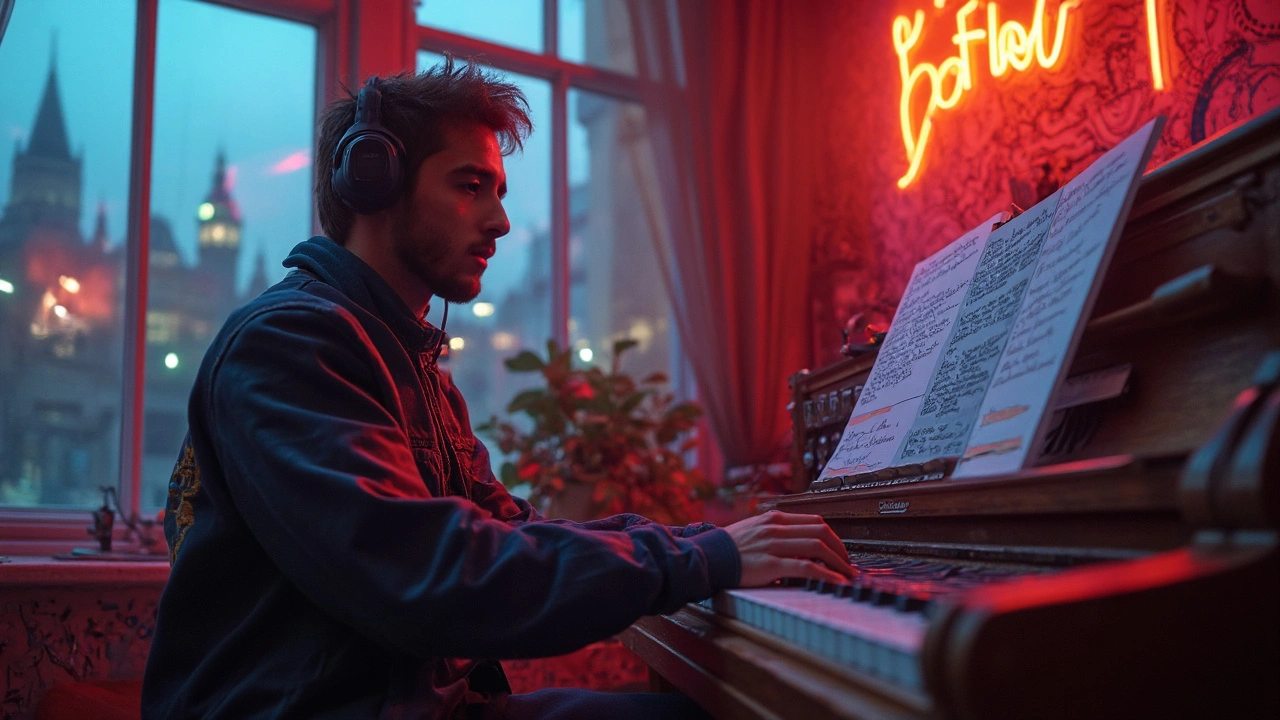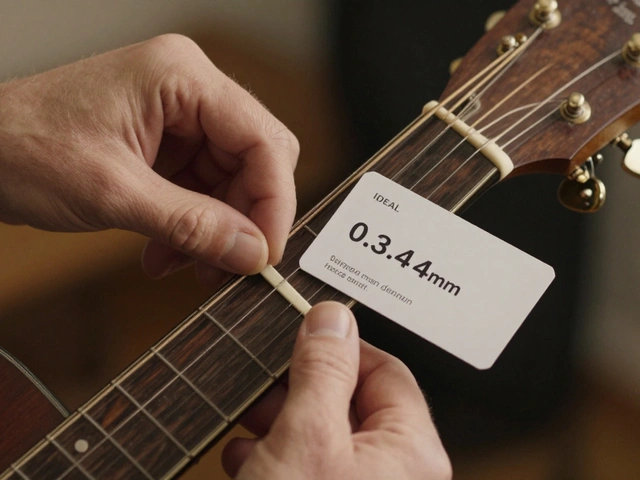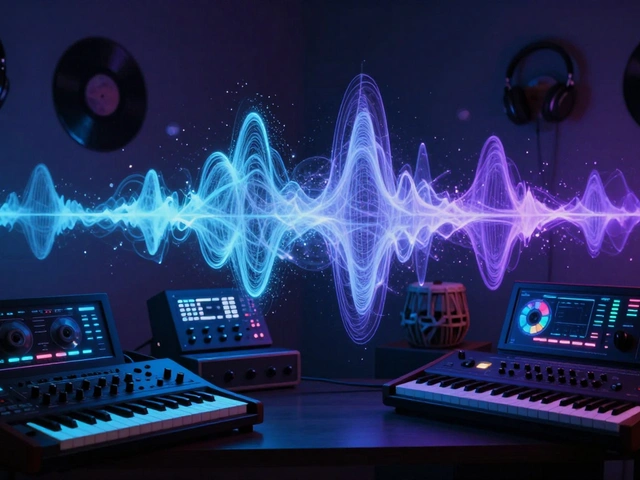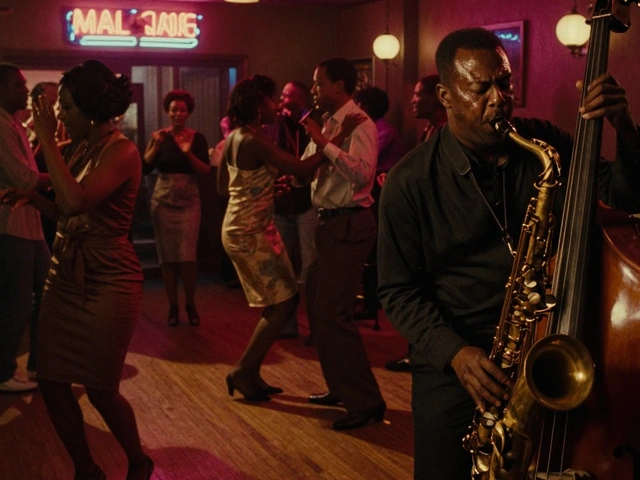If you think hip hop and R&B are all about drums and bass, you’re missing a major ingredient—the piano. You’ve heard its sound in everything from iconic samples to cutting-edge beats. It’s not just background noise: the piano often leads, shapes, or flips a track’s vibe. If you want to understand why songs hit so hard or stir up emotions, you have to look at how the keys are used in today’s music.
Why the Piano Matters in Hip Hop and R&B
The piano isn’t just for ballads or jazz solos—it’s a foundation for modern hip hop and R&B. Producers and artists use it to set mood, add drama, and build hooks that stick in your head. A killer chord progression or a haunting riff can turn a good track into a hit. The reason? The piano blends melody and rhythm, giving producers a flexible tool to anchor a beat or let vocals shine.
Look at Kanye West’s “Runaway”—its stark piano opening is unforgettable and instantly signals vulnerability. Alicia Keys brought raw piano power into R&B’s mainstream, and John Legend built entire tracks around simple, soul-driven progressions. Hit-Boy, Metro Boomin, and Zaytoven all use pianos to create everything from classic boom-bap to moody trap or church-like atmosphere. It’s practical too: with digital pianos, even a bedroom producer can layer pro-level keys into a beat.
The piano stands out because it covers melody, harmony, and rhythm in one instrument. That means you can sketch an entire song’s backbone with just some keys—no expensive studio needed. Plus, sampling old vinyl for jazzy or soulful chords is a fast way to bring depth and nostalgia into a modern sound.
How Producers and Artists Use Piano in Tracks
Producers don’t just sprinkle the piano on tracks—they use it like a paintbrush. Want a gritty vibe? Mess up the keys, drop them in half-time, add some reverb. Craving pure emotion? Stick to clean, simple chords, and let them breathe under the vocals. You’ll often hear:
- Hip hop production leaning on sampled piano loops from classics by Stevie Wonder, Aretha Franklin, or Elton John. Chopped, sped-up, and flipped, these bits become hooks or bridges.
- Trap and drill leaning into eerie, minor-key piano melodies as a base for hi-hats and booming 808s. Atlanta’s Zaytoven practically made this sound the city’s signature, mixing his church piano past into beats for Gucci Mane and Migos.
- R&B ballads stripped to the core—a few warm piano chords and a vocal that tells a story. Keys offer space, depth, and soul, calling up feelings even before a word is sung.
- Layered harmonies, pads, and textures added with synthesized keys instead of real acoustic pianos—think Drake’s “Marvins Room” or SZA’s “Good Days.”
Even when the piano isn’t front and center, it’s adding glue and texture. You’ll notice it when it’s gone: tracks feel flatter, less emotional, less human.
Piano Patterns and Tricks That Shape the Sound
It’s not just about playing a lot of notes—the smart use of patterns and timing shapes the emotion of a song. A simple, repeated piano melody adds tension in hip hop (think Dr. Dre’s “Still D.R.E.”). Off-beat stabs make trap more urgent. Gentle arpeggios in R&B pull listeners in. Here are a few go-to approaches:
- Minor keys: For darker, moodier vibes, producers stick to the minor scale. It creates instant tension and works with gritty lyrics or tough beats.
- Chord progressions: Using four or five chords, repeated, lets an artist freestyle or sing over something solid and familiar. The circle of fifths is a crowd favorite—it’s the backbone of hit after hit.
- Syncopation: Playing off the beat or delaying chords makes a track swing and keeps it from sounding robotic. Piano syncopation can make a straight rap beat dance and groove.
- Sampling: Flipping a vintage soul or jazz piano piece is a goldmine for nostalgic or emotional tracks. The right sample, filtered and chopped, can mean instant radio play.
By 2025, virtual instruments and plugins have blown open options for producers—think real-sounding keys, lo-fi effects, even AI-powered piano helpers. It’s never been easier to add that classic touch or invent something wild and new.
| Track/Artist | Piano Role | Year | Type |
|---|---|---|---|
| Kanye West – "Runaway" | Lead motif, emotional hook | 2010 | Hip Hop |
| Tupac – "Changes" | Sampled, drives melody | 1998 | Hip Hop |
| Alicia Keys – "If I Ain’t Got You" | Core instrument, ballad | 2004 | R&B |
| Dr. Dre – "Still D.R.E." | Repeated riff, signature sound | 1999 | Hip Hop |
| SZA – "Good Days" | Textured chords, mood setter | 2021 | R&B |
| Lil Baby – "The Bigger Picture" | Sampled chords, foundation | 2020 | Hip Hop |
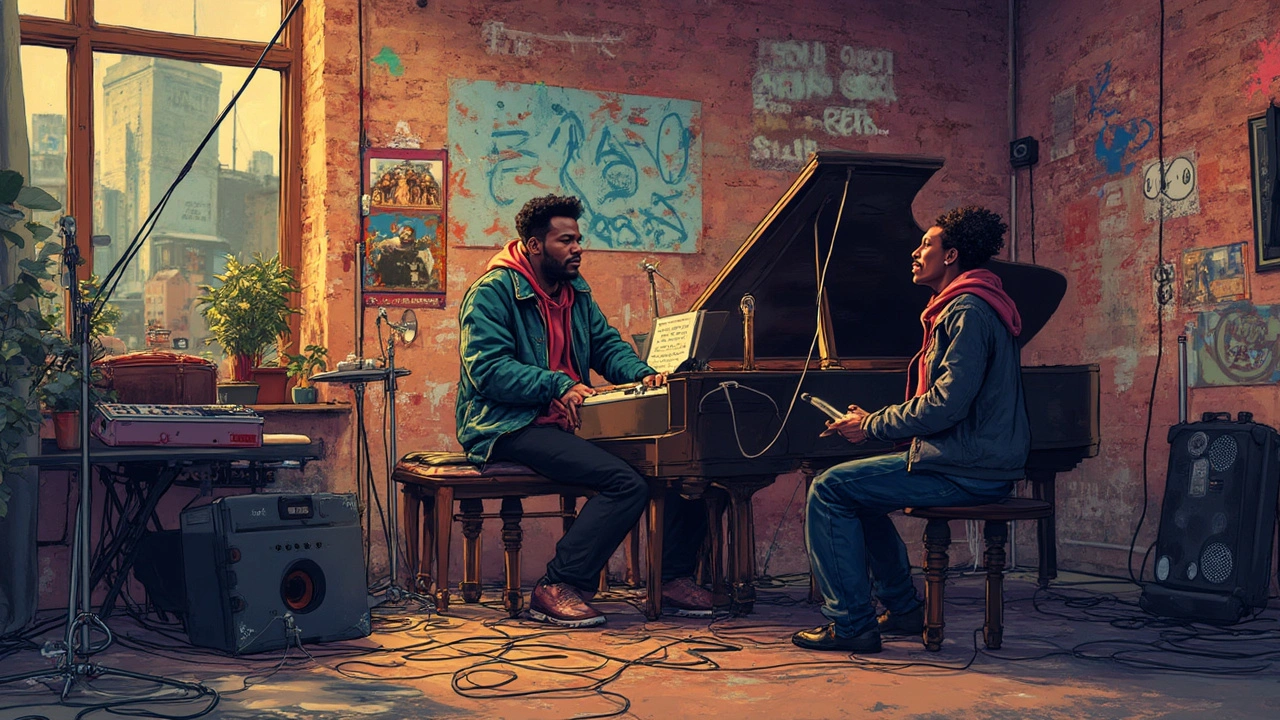
Classic and Modern Examples to Steal From
If you’re a beatmaker, songwriter, or just a superfan breaking down hits, it helps to see exactly how pianos mold these sounds. First up, Dre’s “Still D.R.E.”—as soon as you hear those four notes, you know the track. The loop never gets old because it’s both hypnotic and full of tension. Another example: Alicia Keys builds whole tracks with her playing, adding subtle shifts that mirror her vocal emotion. In modern pop-influenced R&B, like Frank Ocean’s “Thinkin Bout You,” the piano quietly lifts the story, without crowding the voice.
Hip hop uses sampled piano to tug on nostalgia. Tupac’s “Changes” rides a Bruce Hornsby sample, layering storytelling on top of classic 1980s chords. Travis Scott’s “STOP TRYING TO BE GOD” flips a funky gospel-type piano into a modern, epic vibe. And in 2025, newer producers use plugins to turn keys into shimmering pads or even glitchy, electronic hooks that still reset a track’s atmosphere.
- If you want to write like a pro, start tracks with a simple piano progression. Record yourself singing, rapping, or freestyling over it. The best ideas often flow out when the keys are uncomplicated.
- In live shows, watch how artists use real pianos or MIDI keys to turn a song’s intro into a goosebumps moment. A lot of performers—think H.E.R. or John Legend—switch from loops to live playing to build organic hype.
- When collaborating, having solid piano skills makes you the MVP in the studio. You can jam, test ideas, and help singers find melodies on the fly.
Mood, drama, groove—you name it, the keys deliver. That’s why every modern studio has a keyboard handy, whether it’s wood and strings or a plastic USB plug-in.
Checklists, Pitfalls, and Handy Tips for Piano in Hip Hop & R&B
- Piano fits anywhere: Don’t be afraid to use classical, gospel, jazz, or pop chords. The cross-breed sounds spark new ideas fast.
- Spacing matters: Too many notes muddle the beat; less is often more.
- Don’t forget texture: Blend acoustic and synthetic keys for emotion and modern flavor.
- Sample wisely: Legal sample packs and royalty-free collections are everywhere now. Don’t risk takedowns on YouTube or Spotify.
- Take a cue from legends: Study Alicia Keys, Metro Boomin, Zaytoven, and older heads like DJ Premier. Their tracks teach you how keys can both anchor and energize.
If your next beat sounds flat, try muting everything but the piano and vocals. Odds are, you’ll hear what needs to change—or maybe discover a vibe hiding in plain sight.
| Tip | Why It Works |
|---|---|
| Keep chords simple | Helps vocals and beats stand out; easy to sample |
| Play with timing | Syncopation creates bounce and groove |
| Layer real and digital pianos | Adds warmth or futuristic edge, depending on combo |
| Choose legal samples | Avoids copyright drama—especially on streaming |
Mini-FAQ: The Piano in Hip Hop and R&B
- Q: Do producers really still use real pianos, or is it all digital now?
A: Both. Some classic tracks use acoustic grand pianos. Most new tracks use digital keys and plugins for flexibility. - Q: Is learning piano important for producing hip hop or R&B?
A: It helps a ton. Knowing a few chords and basic scales opens up your options and helps with collaboration. - Q: What’s a good place to find piano sounds for beats?
A: Check out Splice, Arcade, Komplete, or your DAW’s built-in piano libraries. - Q: Why do so many hip hop hits use the same chord progressions?
A: Listeners connect with familiar progressions. Producers tweak rhythms, voicings, and effects to keep things fresh.
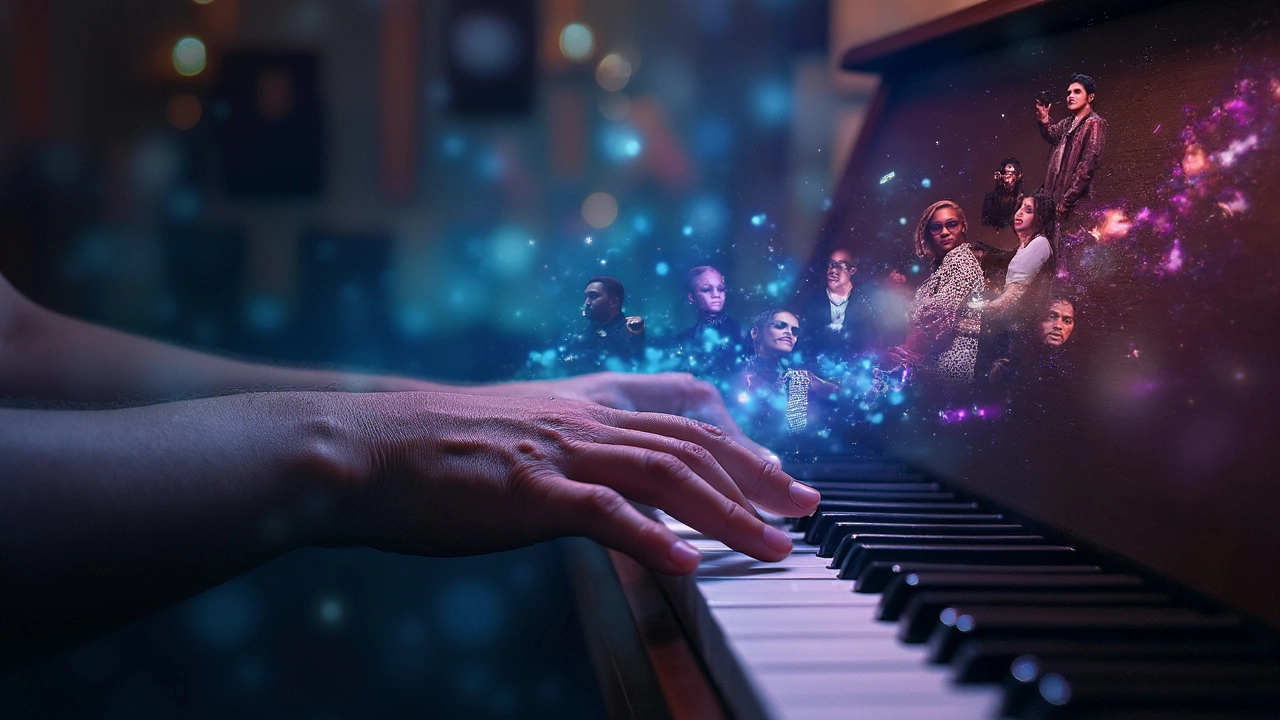
Next Steps for Artists, Producers, and Fans
- If you’re just starting out, learn a handful of piano chords and see how fast you can build a beat around them.
- Experienced producers: experiment with layering acoustic and digital piano sounds or try flipping an old tune into a new sample for your next track.
- For fans and curious listeners, go back to your favorite tracks with headphones. Notice when the piano pops up, what it does, and what happens when it suddenly cuts out. It’ll change how you hear the song.
The piano isn’t going anywhere in hip hop and R&B—it’s always there, flipping an ordinary beat into something unforgettable.

